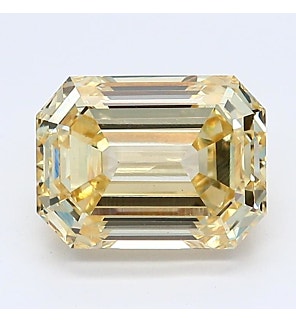It’s important to have a good understanding of how the 4 C’s relate to emerald-cut diamonds. Just like with any other diamond cut, understanding the necessary information helps you make the best decisions for your ring.
Cut — The shape of a diamond refers to its physical appearance, while the cut refers to how well the diamond’s features interact with light. There is not an official GIA rating for emerald diamonds, but Clean Origin does provide a rating system for some of our emerald diamonds to help you gauge how well they shine. Keep in mind that due to their unique cut, emeralds provide a hall-of-mirrors effect rather than the sparkle of a round brilliant diamond.
Clarity — When it comes to clarity, which refers to how many inclusions and blemishes a diamond has, emerald-cut diamonds need to be carefully examined. Each diamond will have a different amount of flaws, ranging from SI2 (having the largest amount) to VVS1 (having the least). Emerald diamonds are especially likely to show any inclusions due to the large table facets that highlight visible inclusions in their centers. It is essential that you pay close attention to the clarity grade of your emerald-cut diamond. If you’re worried about your loved one spotting a flaw, choose a higher clarity rating.
Color — When you review your choice of diamond, color actually refers to the absence of color. Or, to put it more simply, the higher the grade, the less color the diamond has. Clean Origin only offers diamonds from J to D, though there are diamonds with color from Z (containing the most color) to D (containing the least color). Emerald diamonds tend to retain their color, reflecting any color within. If a warmer color is a problem, you may want to consider investing in a higher color grade.
Carat — One of the best qualities of emerald rings is that they tend to look much larger than their carat weight due to their expansive top surfaces. This benefit means you can purchase a diamond that appears bigger than its carat weight for an engagement ring at an affordable price. You can also purchase a lower-carat weight with the same appearance as a higher-carat gemstone. It’s a win-win purchase either way — and when you consider that a lab grown diamond can save you 20-30% on the price, it makes sense to increase carat weight even more.
















